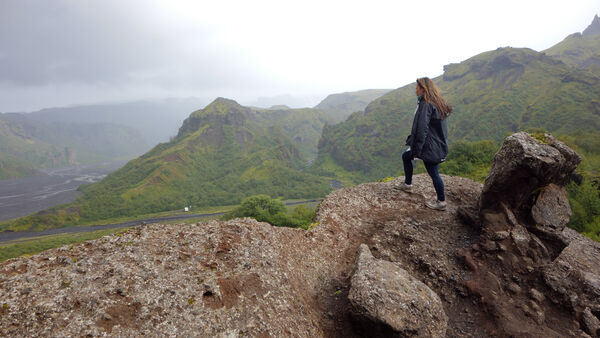When to Go to Iceland
By Rick Steves and Ian Watson
Your Icelandic experience will vary drastically depending on the time of year.
Summer really is the best time to go — even if everyone else is there with you. From June through August, days are long and the weather is at its best (though it's still unpredictable). The country bustles with sightseeing attractions open and in full swings. At these northern latitudes, from about June 1 to July 15, the sun dips below the horizon for only a few hours, and it never really gets dark. Icelanders take full advantage of these days of "midnight sun," and so should you. In July and early August temperatures can climb into the 60s and might break 70 (even if the wind chill keeps things brisk). After mid-August, it rapidly gets colder and darker, kids go back to school, and things quiet down.
May and September lack the vitality of summer but offer occasional good weather and minimal crowds. May is bright, with the solstice nearing, but it's chilly. September brings subtle fall colors to the fields and hillsides, and as evenings darken, the first glimpses of the northern lights. But in these months, snow and extreme weather can disrupt your plans, particularly on higher-elevation roads, and remote areas are in accessible. April and October see harsher weather, with a good chance of snow and slippery roads anywhere outside Reykjavík.
Days are short from mid-October to mid-February — the sun rises after 11:00 all December — and dusk will draw the shades on your sightseeing well before dinner. You can still enjoy a stopover in Reykjavík, though, where music and film events liven up the darkness. Christmastime activities in the capital (including bonfires and fireworks on New Year's Eve) offer a warm experience at a frosty time. Outside the city, roads ice over, and sights and accommodations are closed or have reduced hours. Bus trips to the nearby Golden Circle and South Coast are typically still possible (leave winter driving to the pros). Driving the Ring Road in winter is inadvisable at best, and impossible at worst.
One benefit of a winter visit is the chance to view the elusive northern lights, though whether you'll actually see them is unpredictable.
Ian Watson is the co-author of the Rick Steves Iceland guidebook.


